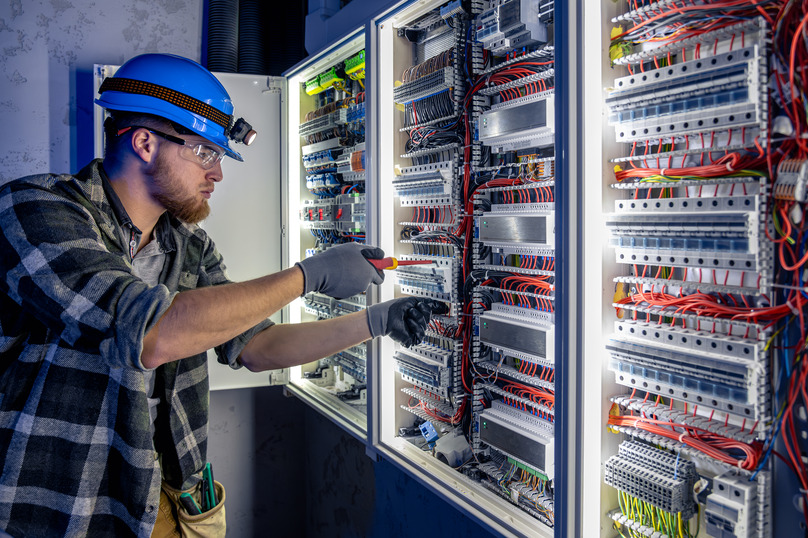Protecting your power systems from hazardous environments requires the selection of the appropriate electrical enclosure. Much is at stake here, impacting safety, operational efficiency, and regulatory compliance. Electric Enclosures protect equipment and personnel, prevent costly downtime, and meet stringent safety regulations. The proper enclosure can make the difference between smooth operations and potentially devastating failures in an oil refinery, chemical plant, or manufacturing facility.
Hazardous environments pose unique and usually extreme challenges, including exposure to corrosive chemicals, explosive gases, extreme temperatures, and moisture. These conditions can compromise equipment performance, leading to premature failure, safety hazards, and operational disruptions. Investing in the appropriate electrical enclosure safeguards your equipment, extends its lifespan, reduces risks, enhances productivity, and ensures compliance with industry regulations.
To help you make a wise decision, this guide provides a detailed overview of the key factors to consider when selecting an electrical enclosure for hazardous environments. From material selection and environmental ratings to design features and certifications, we’ll walk you through everything you need to know to choose the right solution for your application. After all, in high-risk settings, a proper enclosure isn’t just an accessory. It’s a necessity.
Top Criteria for Enclosure Selection
- Protection Requirements: Identify the environmental threats the enclosure needs to guard against, such as moisture, dust, chemicals, UV radiation, extreme temperatures, or physical impacts. The IP (Ingress Protection) rating system helps specify the required protection level.
- Size and Space Analysis: Calculate the total volume needed for all components, including clearance for heat dissipation, cable management, and maintenance access. Factor in future expansion needs. Consider both internal mounting space and external footprint limitations.
- Thermal Management: Evaluate heat generation from internal components and ambient temperature conditions. Determine if passive cooling (vents, heat sinks) is sufficient or active cooling (fans, air conditioning) is needed. Position heat-generating components strategically.
- Material Selection: Match the enclosure material to the environment and application. Options include Steel, Stainless steel, Aluminum, Plastic, and Fiberglass.
- Mounting and Installation: Consider how and where the enclosure will be mounted: wall-mount, free-standing, pole-mount, etc. Make sure mounting options are compatible with the location and support the total weight: plan cable entry points and accessibility.
- Regulatory Compliance: Verify that the enclosure meets relevant industry standards and regulations for your application, such as UL listings, NEMA ratings, or specific industry certifications. If applicable, consider hazardous location requirements.
- Accessibility and Maintenance: Design for easy access to components requiring regular maintenance or adjustment. Consider door swing clearance, removable panels, and internal component mounting arrangements plan for cable management and routing.
Navigating Hazardous Area Classifications
Hazardous environments are classified based on flammable gases, vapours, or combustible dust. Familiarize yourself with these classifications to choose the proper enclosure:
- Zone 0, Zone 1, Zone 2: Areas with varying degrees of exposure to explosive gases.
- Division 1, Division 2: Used in North American standards to describe continuous or intermittent hazardous conditions.
- Class I, II, III: Categories based on the type of dangerous material gases, dust, or fibers.
Checklist for Hazardous Environment Enclosure Features
When selecting an enclosure, prioritize these features:
- Explosion-Proof Design: Built to contain any internal explosion without igniting external hazards.
- Seamless Sealing: Prevents ingress of dust, water, or corrosive elements.
- Robust Locking Mechanisms: Ensures only authorized personnel can access the equipment.
- Customizable Layouts: Allows easy integration of controls, displays, and wiring.
Common Applications of Hazardous Environment Enclosures
- Oil and Gas Industry: Protects control systems in areas with flammable gases.
- Chemical Processing: Shields sensitive electronics from corrosive chemicals.
- Pharmaceutical Manufacturing: Ensures hygienic and explosion-proof environments.
Tips for Maintenance and Inspection
- Schedule regular visual inspections to check for physical damage, corrosion, and wear on seals, hinges, and locking mechanisms to prevent water or dust ingress.
- To maintain environmental protection, keep gaskets and seals clean, test their integrity regularly, and replace them immediately if any signs of degradation are found.
- Test ventilation systems and filters monthly, clean or replace filters as needed, and ensure all cooling fans operate correctly to maintain proper internal temperature.
- Check all electrical connections periodically for loose terminals, overheating, or corrosion signs, and verify appropriate grounding connections remain secure.
- Document all maintenance activities, including dates, findings, and repairs performed, creating a maintenance history that helps predict potential future issues.
- Clean the enclosure interior regularly to prevent dust buildup on components, and inspect the cable.
BCH Electric Limited: Setting the Standard in Electrical Enclosures
BCH Electric Limited is a trusted name in the industry, offering high-quality enclosures designed for hazardous environments. Our products combine durability, functionality, and compliance with global safety standards. Whether you need explosion-proof designs, weather-resistant models, or custom configurations, BCH has a customized solution.
Get in touch with our experts today to find the perfect enclosure for your application. Visit our website or contact our team to learn more about our comprehensive range of electrical solutions.


